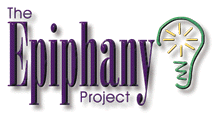

| Paths and Practices
Peer Critique --Diane C. Boehm, Saginaw Valley State University Many students tell me they find it easier to be honest and specific when critiquing on-line, rather than f2f. Technology also makes it possible for students to work with each other, try a different wording or organization, and get immediate feedback on how well the revision works. (next entry) Peer Critique --George Otte, Baruch College/CUNY There are variety of ways that peer critique can be approached in computer-mediated instruction, with variations in programs (Common Space vs. Connect, for instance) as well as in different instructors' approaches. One thing I've noticed consistently--though I may just be looking at this through a rose-colored monitor screen--is that, though I might expect just the opposite, the logistics of peer review can seem less complicated when computer-mediated. I've been doing an internship program with graduate students (as first-time teachers) for over a decade now, and I notice that when they're exposed to peer review and the literature thereon they tend to get bogged down in things like the size of groups and whether those should dissolve and reform or remain stable. Logically, these questions would also obtain in the "computerized" classroom, but I find they don't really. (Maybe it's that instructors focus on the rather more novel procedures the use of computers introduces.) Students have their own resistances to peer critique, and computers do a lot to overcome that. Students tend to be fascinated by the "publication" of their papers (and/or comments thereon), and this militates against the suspicion that peer critique is really just busy work concocted by an instructor who will soon enough gavel in the real verdict. For a long time, I used a customized version of the peer review component in Daedalus ("Respond"), and I particularly liked the opportunity to elaborate on my expectations in pop-up explanations. In working up the "Electronic Essay" (that web application for creating peer review forums I described above), what I have tried to do is take the best of what worked for me, make it a little less "writing-teacher" focused, and make it available on the web. Students tend to be genuinely interested in one another's writing, and computers level some things about that playing field (less significant points of distinction like handwriting) while generally improving access to one another's work. . . . A more recently developed use of computer-mediated writing clearly has applications beyond basic writing because it was designed to facilitate networked writing in the disciplines. Realizing that general use of CMC could not be limited to computer labs (there simply aren't enough), we developed a web-based application at Baruch called the Electronic Essay, basically to facilitate peer review. Students can either compose or paste in a response to an assignment, review it with the help of an instructor-generated checklist, and then take a look at--and comment on--what other students have done. In the current prototype, students' essays are posted anonymously but comments thereon bear students' names (and e-mail addresses); the instructor, of course, can access the names of all the authors and can send comments privately or post them in the public forum of nested threads. We are only in the second semester of piloting this application, but I already find it the perfect complement to my use of InterChange, the asynchronous (and more deliberative) flip side of synchronous (spontaneous but often underdeveloped) chat. It addresses a real need students have long had in composition courses: the attempts of textbooks and instructors to address this notwithstanding, we have never been good at modeling the kind of discourse we expect from our students; they find the opportunity to see other responses to an assignment much more inviting than reviewing models in textbooks (things they--or I--have never put much stock in anyway). (next entry)
Join the conversation! |